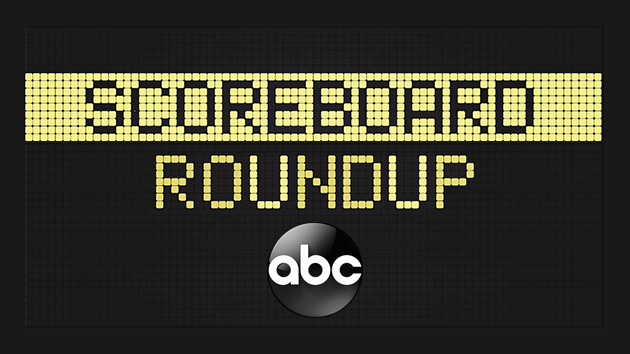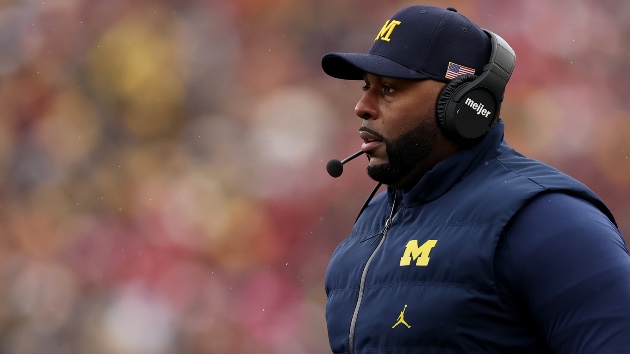What’s really behind the NFL’s offensive struggles through two weeks and how they can be fixed
Written by CBS SPORTS ALL RIGHTS RESERVED on September 19, 2024




The biggest story through the first two weeks of the 2024 NFL season is the massive step backward taken by offenses. In a league that has been dominated by offenses and seen a scoring explosion in recent seasons, defenses are fighting back — and succeeding in their efforts to do so.
Teams are averaging just 21.4 points per game to date, and it’s the continuation of a downward trend that has seen scoring dip from a peak of 24.8 per game in 2020 and a three-year period where the average was over 23 per game. Total yardage is down as well, with teams averaging 318.5 yards per game compared with 331.6 last year, a peak of 359 in 2020, and a three-year period where the average was more than 340. And it’s not just about pace: yards per play are down, as are points per drive. Defenses really are winning the battle right now. (In relative terms, at least.)
Much of the offensive backslide has been attributed to an increase in “two-high” coverages, with split safeties covering the deep part of the field to try and eliminate big plays and instead force offenses to matriculate the ball downfield. And that is certainly a factor. You can see in the data from Tru Media that teams are playing Cover-2, Cover-4 and Cover-6 significantly more often than in the recent past.
| Season | Cover-0 | Cover-1 | Cover-2 | Cover-3 | Cover-4 | Cover-6 | Two-High |
|---|---|---|---|---|---|---|---|
| 2019 | 3.3% | 29.7% | 10.4% | 31.6% | 10.1% | 6.3% | 26.8% |
| 2020 | 3.9% | 25.4% | 10.6% | 32.8% | 11.6% | 7.0% | 29.2% |
| 2021 | 4.1% | 22.5% | 11.4% | 34.2% | 11.5% | 8.2% | 31.1% |
| 2022 | 3.5% | 19.8% | 11.4% | 36.5% | 12.8% | 8.3% | 32.5% |
| 2023 | 4.1% | 19.0% | 10.5% | 35.6% | 14.2% | 9.5% | 34.2% |
| 2024 | 3.9% | 20.9% | 10.7% | 33.7% | 15.4% | 8.5% | 34.6% |
But more than just the rise of those coverages, and the light boxes (i.e. six or fewer defenders in the box) that tend to accompany them, it is the effectiveness of those tactics relative to years past that is the real story.
It wasn’t all that long ago that NFL offenses had just as much success against two-high coverages as they did against single-high. In 2019, they were nearly as successful against Cover-2 as they were against Cover-1, nearly as successful against Cover-4 as they were against Cover-3, and more successful against Cover-6 (which combines Cover-2 and Cover-4) than just about any other coverage.
As you can see here, measured by Tru Media’s EPA (expected points added) per dropback:
| Season | Cover-0 | Cover-1 | Cover-2 | Cover-3 | Cover-4 | Cover-6 | Two-High |
|---|---|---|---|---|---|---|---|
| 2019 | -0.01 | 0.04 | 0.03 | 0.07 | 0.05 | 0.06 | 0.04 |
| 2020 | 0.02 | 0.02 | 0.08 | 0.02 | 0.01 | 0.03 | 0.04 |
| 2021 | 0.11 | 0.03 | 0.02 | 0.02 | 0.05 | 0.01 | 0.03 |
| 2022 | -0.14 | 0.04 | -0.05 | 0.01 | -0.01 | 0.07 | 0.00 |
| 2023 | -0.01 | 0.03 | -0.03 | -0.02 | 0.00 | 0.01 | -0.01 |
| 2024 | 0.03 | -0.03 | 0.06 | -0.03 | -0.08 | 0.06 | 0.00 |
The reason for the disparity nowadays? Offenses are reacting differently to two-high coverages than they did a few years ago. Basically, defenses are daring opposing offenses not to throw it deep on those plays, and offenses are taking the bait.
The average depth of throw against two-high coverages was 7.8 yards in 2020. It has dropped all the way to just 6.6 yards in 2024. Offenses threw the ball an average of 1.9 yards short of the first-down marker against two-high in 2020. This year, they are throwing an average of 3.2 yards short of the sticks against the same coverages. In 2020, 11.6% of passes against two-high traveled at least 20 yards in the air. This season, that number is all the way down to just 9% of passes.
These aren’t the overall numbers. They are JUST against two-high. Teams are getting worse at attacking these coverages because they are surrendering to what the defense wants them to do. Completion percentages against two-high are slightly up. Drop rates on those throws are down. The rates of off-target throws are down. “Take what the defense gives you” is a common theory of offense, and teams are taking that to heart — but it’s not working in their favor.
And here’s the other thing: teams that do throw deep against two-high safety looks are seeing more success than ever before. On throws of 15-plus air yards against two-high so far this season, NFL teams have a 50% success rate. Quarterbacks have a 19.9% off-target throw rate, 8.1% touchdown rate, 5.1% interception rate and 35.3% explosive-play rate, while receivers have dropped just 2.9% of their throws. Teams are gaining an average of 13.3 yards per attempt and 0.65 EPA per dropback. All of those numbers are the best of any season since at least 2019.
And this is just in the passing game. There’s also the way teams are reacting when opponents play a lighter box, essentially daring them to run the ball. Offenses, again, are obliging the defense’s wishes — and doing so with less success than ever before.
Once again, we can look to Tru media for evidence.
| Season | Light Box % | Run % | EPA/Rush | YBCo/Rush |
|---|---|---|---|---|
| 2019 | 53.2% | 33.8% | -0.04 | 1.94 |
| 2020 | 54.0% | 34.5% | -0.06 | 2.06 |
| 2021 | 54.6% | 34.2% | -0.03 | 1.87 |
| 2022 | 54.1% | 35.2% | -0.01 | 2.04 |
| 2023 | 57.8% | 36.3% | -0.06 | 1.80 |
| 2024 | 57.7% | 40.3% | -0.06 | 1.41 |
Light-box rates are up, albeit only slightly. The rate at which teams are calling run plays against those looks is up quite a bit, indicating that teams think it’s a good idea to run more often when presented with lighter boxes. That’s intuitive thinking, but it’s not working for them. EPA per rush attempt is down, and yards before contact per attempt is WAY down. Worse yet, 13.3% of early-down runs into light boxes were stopped at or behind the line of scrimmage in 2020. That’s figure is all the way up to 16.4% now. They aren’t just gaining fewer yards, they’re getting stuffed altogether more often, despite being presented with “favorable” run looks.
There are other factors at play here beyond just two-high and the way teams are reacting, of course. One is that, as Kevin Cole of Unexpected Points noted, many of the “Golden Age” quarterbacks of recent years have retired, declined or both. It wasn’t all that long ago that guys like Tom Brady, Peyton Manning, Drew Brees, Philip Rivers, Ben Roethlisberger, Matt Ryan and Tony Romo were still in the league, or that Russell Wilson and Aaron Rodgers were among the small handful of best players in the sport. Those guys are all either no longer or the field or no longer the same version of themselves for reasons related to injury or age.
There’s also the fact that the new-age quarterbacks who have taken their place play a different style. There are higher sack-to-pressure rates for many of these younger quarterbacks, as well as higher scramble rates when under pressure, for example. Both of those factors result in fewer pass attempts overall. Scrambles are good plays, but they also generally don’t produce as many yards or as many touchdowns as do passes.
Offenses also aren’t yet leaning hard enough into some tactics that we know can generate success against these kinds of defenses: pre-snap and at-the-snap motion, play-action, screens. One need only look at teams like the Vikings and Saints to see what those kinds of things can do for you. Most of the best offenses in the NFL right now are either led by physical freak elite quarterbacks (Patrick Mahomes, Josh Allen, Lamar Jackson, etc) or run the Kyle Shanahan/Sean McVay-style offense that features a ton of motion and play action and other bells and whistles that put defenses in conflict (49ers, Vikings, Saints, Dolphins, Texans, etc). There are exceptions, of course, but exceptions often prove the rule. Teams should be leaning harder into these tactics, and quickly, to counter-act what defenses are doing to them.
But more than that, they should probably stop obliging defenses’ strategies. The opposing team knows that daring you to run and throw short passes is a winning strategy for them, relative to what was happening in the recent past. While it may seem like you should just take the “easy” yards, it turns out that it’s actually pretty damn hard to make a living on offense that way. Refusing to take their bait and instead attacking them aggressively is the better way to go about it.
The post What’s really behind the NFL’s offensive struggles through two weeks and how they can be fixed first appeared on OKC Sports Radio.






